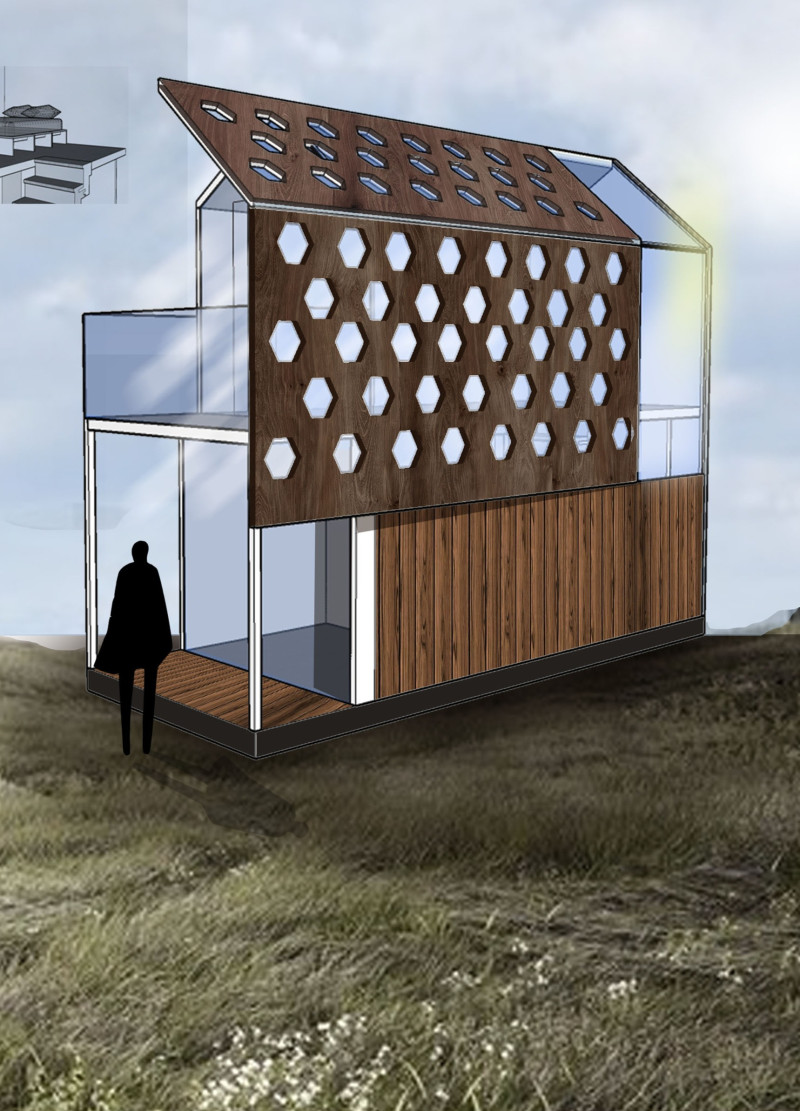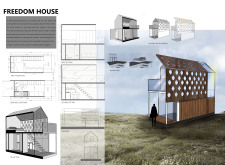5 key facts about this project
At its core, Freedom House seeks to create a harmonious relationship between the indoor spaces and the natural surroundings. This concept is realized through the incorporation of expansive glass façades that enhance the connection to the outside environment, allowing natural light to permeate the living areas. This feature not only results in a bright and inviting interior but also blurs the line between indoor and outdoor spaces, thereby fostering a deeper engagement with nature.
The layout of the Freedom House is designed to maximize the usability of space without compromising comfort. The ground floor accommodates essential communal areas such as a kitchen and living room, providing an open and accessible environment for daily activities. The design takes into consideration the importance of social interaction, ensuring that spaces are interconnected while still promoting a sense of intimacy.
One of the most notable aspects of the Freedom House is its innovative movable roof system. This mechanized feature allows the roof to adjust to the environmental conditions, enabling occupants to control the amount of light and air entering the home. This flexibility not only enhances user comfort but also promotes energy efficiency by reducing the reliance on artificial lighting and climate control systems. The idea of a responsive architecture is further elaborated through this design approach, which aligns with current trends in sustainable building practices.
In terms of materiality, the Freedom House utilizes a combination of treated wood, glass, aluminum, and concrete. Treated wood provides natural warmth and structural integrity while presenting an eco-friendly alternative for construction. The use of glass in the façade enriches the visual appeal and strengthens the connection with the surroundings. Overhead, the aluminum roof mechanism offers strength and lightweight flexibility, essential for the home’s dynamic features. Concrete serves as a stabilizing foundation, ensuring the overall durability and longevity of the structure.
The interior is characterized by a focus on multifunctionality, emphasizing that living spaces can adapt to diverse needs. For instance, the design incorporates movable furniture, including a unique bed system that allows for reconfiguration of the living area, facilitating various activities throughout the day. This approach to interior design reflects a growing emphasis on living spaces that are both practical and versatile, aligning with the diverse lifestyles of modern occupants.
Freedom House stands as a tangible embodiment of innovative architectural ideas that prioritize sustainable living and communal interaction. Its flexible layout, integration of natural elements, and adaptive features represent a forward-thinking vision in architecture. The careful selection of materials and the thoughtful design decisions made throughout the project contribute to a residence that is as much about style as it is about sustainability and livability.
For those interested in delving deeper into this architectural project, it is encouraged to explore the project presentation that includes a wide range of materials such as architectural plans, architectural sections, and architectural designs that provide greater insights into the underlying concepts and practical implications of the Freedom House. Through this exploration, one can gain a fuller understanding of how contemporary architecture is being shaped by innovative ideas and evolving lifestyles.























